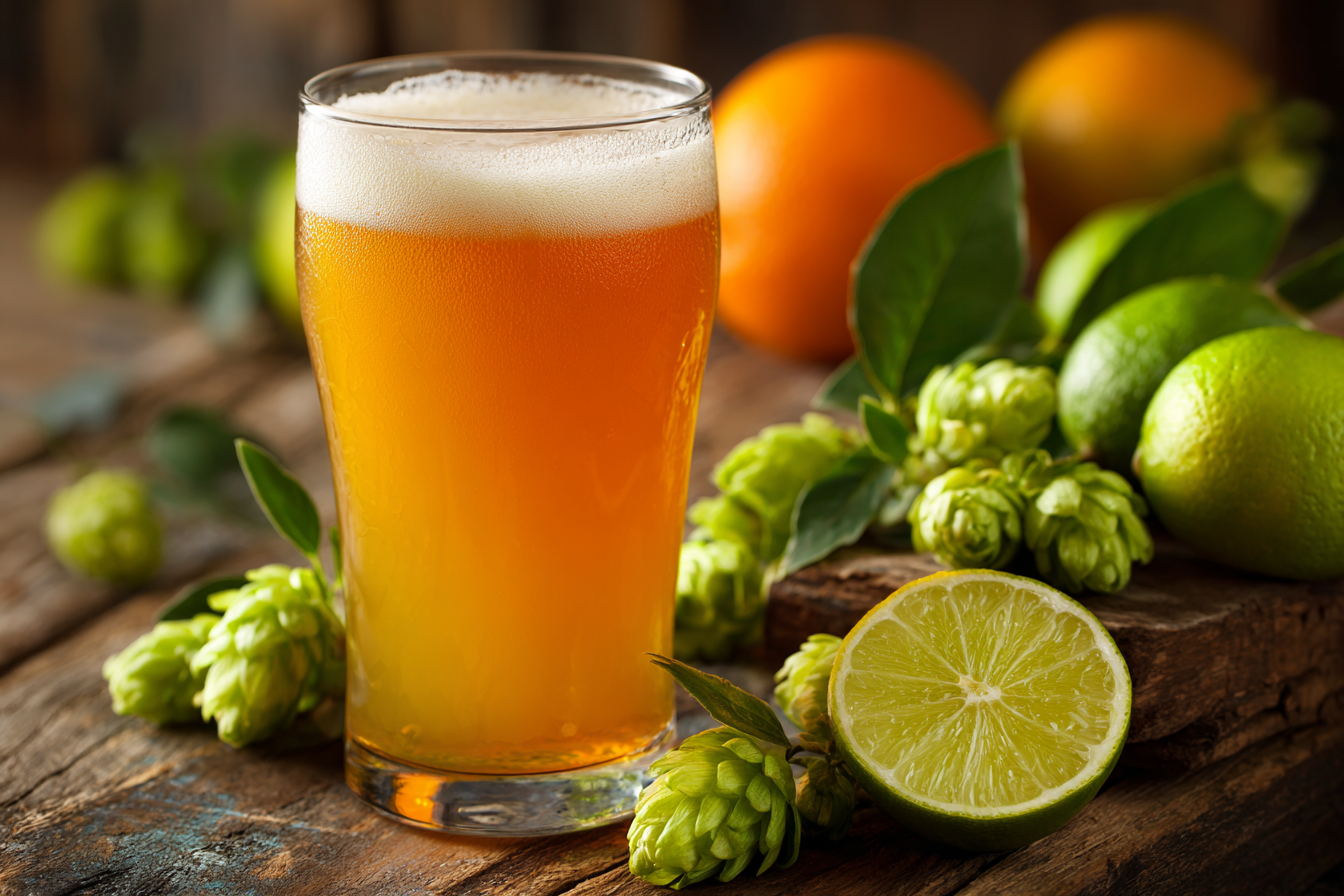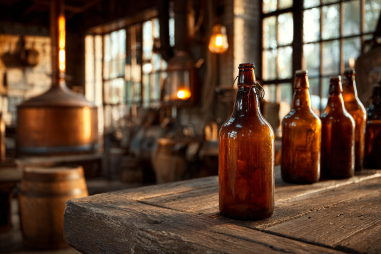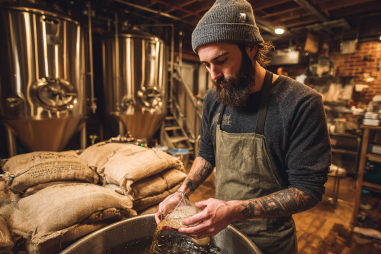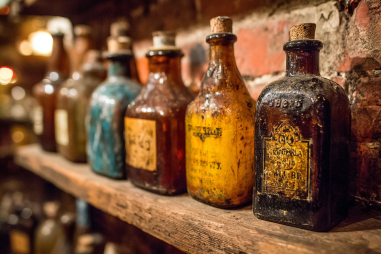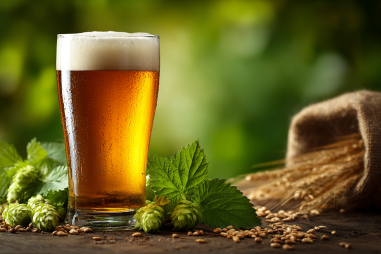If you’re a fan of craft beer, you’ve probably noticed the growing popularity of Sour IPAs. These intriguing brews marry the zesty tang of sour beers with the robust hop bitterness that IPA lovers cherish. The result is a beer that challenges traditional flavor boundaries and offers a dynamic tasting experience. In this article, we’ll explore the sour IPA flavor profile, breaking down what makes these beers stand out and why they’ve captured the hearts of beer enthusiasts around the world.
Introduction to Sour IPA Flavors
Sour IPAs are an exciting hybrid style that blends two distinct beer traditions — the tartness of sour beers and the bold hop character of India Pale Ales (IPAs). While sour beers have been around for centuries and are rooted in wild fermentation methods, IPAs trace their origins to the 19th century with the British emphasis on hop-forward bitterness. Combining these creates a complex beer that plays with both acidity and bitterness to produce a refreshing yet intricate drinking experience.
This combination might seem contradictory, but the balance between sourness and hoppiness creates a dynamic beer profile that keeps your palate engaged. The acidity sharpens the beer’s brightness, while the hops provide layers of flavor that range from floral and citrusy to piney and resinous.
Sourness: Lactic Acid and Other Contributors
The defining characteristic of sour IPAs is their tartness. This sourness generally comes from the production of organic acids during fermentation. The primary acid responsible is lactic acid, which is produced by wild yeast and bacteria, such as Lactobacillus and Pediococcus. These microbes metabolize sugars in the wort (the liquid extracted during brewing) and produce lactic acid, imparting the signature tangy flavor.
Besides lactic acid, other organic acids like acetic acid can be present, especially in beers that undergo more complex or mixed fermentation processes. Acetic acid can add a slight vinegar note, but in balanced amounts, it contributes to overall complexity rather than overwhelming the beer.
It’s worth noting that sour IPAs can be made by different methods. Some brewers deliberately introduce souring bacteria early in the process (a technique known as kettle souring) to control the sourness. Others rely on traditional mixed fermentation with wild yeasts, which can yield funkier and less predictable results.
Hop Characteristics in Sour IPAs
Hops are the heart and soul of any IPA, and sour IPAs are no exception. However, the hop presence in sour IPAs tends to be balanced differently than in traditional IPAs. Because the beer already has a strong acidic backbone, the hops need to complement rather than clash with the sourness.
The hop varieties chosen for sour IPAs often emphasize bright, fruity, and citrus-forward qualities. Think hops like Citra, Mosaic, Amarillo, and Simcoe, which bring notes of grapefruit, tropical fruit, pine, and floral aromas. These hop flavors enhance the juicy, tart character of the beer and provide a fragrant backdrop that harmonizes with the acidity.
Bitterness levels in sour IPAs usually range from moderate to assertive but are never overwhelmingly harsh. The goal is to create a balance where hop bitterness and sourness play off each other, resulting in a crisp, effervescent finish that invites another sip.
Balancing Sour and Bitterness
One of the key challenges in crafting a sour IPA lies in balancing its two primary taste components: sourness and bitterness. Too much sourness, and the beer can taste off-putting or overly sharp. Too much bitterness, and the harmonious blend falls apart, leaving an unpleasant clash on the palate.
So how do brewers strike this balance? They carefully control fermentation variables, hop additions, and the timing of souring. For example, kettle souring allows precise control over acidity before the hops are introduced, ensuring the final bitterness complements the sour notes without overwhelming them.
Craft brewers often profile the beer’s bitterness using International Bitterness Units (IBUs), tailoring values typically between 30 and 60 IBUs depending on the acidity. The carbonation level also plays a role; higher carbonation tends to accentuate sourness and bitterness more vividly, lending a bright, spritzy character that helps balance the flavor intensity.
Common Flavor Notes: Citrus, Tropical, Funk
When you take a sip of a sour IPA, you can expect a flavor palette bursting with vibrant notes that build on the base sourness and hop bitterness. Here are some common flavor nuances you might find:
- Citrus: Lemon, grapefruit, lime, and orange are frequent players. These citrus notes can come both from the hops and the acidic character, enhancing brightness and freshness.
- Tropical Fruit: Mango, pineapple, passionfruit, and guava often emerge, especially when using hops like Mosaic or Citra. These juicy, fruity flavors add sweetness and depth.
- Funk: Some sour IPAs carry a subtle earthiness or “funk,” reminiscent of barnyard or wild yeast characteristics. This funkiness comes from mixed fermentation and adds complexity and rustic charm.
Overall, sour IPAs showcase a thrilling combination of tart, tangy, and bitter notes, rounded out by fruity and floral accents. This complex interplay makes them intriguing for beer lovers who enjoy multifaceted flavor profiles that challenge the conventional brew.
Food Pairings That Complement the Profile
The unique sour IPA flavor profile shines when paired thoughtfully with food. The acidity and bitterness can cut through rich or fatty dishes, while the fruity and aromatic hop notes bring refreshing balance. Here are some pairing ideas that work particularly well:
- Spicy Foods: The acidity and carbonation help cool down heat from spicy Mexican, Indian, or Thai dishes.
- Cheeses: Tangy goat cheese, sharp cheddar, or blue cheese provide contrasting flavors that enhance the beer’s complex notes.
- Grilled Meats: The beer’s bitterness and funk complement the smoky flavors of grilled chicken, pork, or sausages.
- Seafood: Shellfish and oily fish, like salmon, benefit from the beer’s bright acidity, which refreshes the palate.
- Salads and Vegetables: Fresh, citrusy beers match well with salads featuring vinaigrette dressings or roasted veggies.
Exploring these pairings can elevate your tasting experience, bringing out different facets of both the food and the beer.
Popular Sour IPA Examples
To better understand the sour IPA flavor profile, it’s helpful to sample some well-regarded examples from top craft breweries. Here are a few standout sour IPAs that have garnered praise for their balance and complexity:
- Modern Times Beer – Blazing World: A kettle-soured IPA showcasing bright citrus and tropical hop notes with a clean, puckering finish.
- Tree House Brewing Company – Very Hazy Sour: Combines juicy hop character with mild to moderate tartness and a touch of funk.
- Crooked Stave – Surette Provision Saison: Although leaning toward a farmhouse style, this beer integrates sourness with complex hop and yeast-derived flavors for inspiration.
- New Belgium Brewing – La Folie: A renowned sour brown ale with pronounced tartness and subtle hoppy undertones, demonstrating how sour elements can meld with bitterness beautifully.
Trying different sour IPAs helps you appreciate the stylistic spectrum and the creativity brewers bring to this unique category.
Enjoying the Nuances of Sour IPAs
Sour IPAs offer an exciting journey through complex flavors that awaken and challenge the palate. From the bright lactic acid sourness to the vibrant citrus and tropical hop notes, these beers offer a refreshing contrast to traditional IPAs and pure sour beers alike. Whether you enjoy them as a standalone treat or paired with food, sour IPAs have carved out their niche as a versatile and dynamic option in the craft beer world.
Next time you’re seeking something that pushes flavor boundaries while delivering refreshing acidity and bold hoppiness, reach for a sour IPA. You’ll discover why this hybrid style continues to captivate brewers and drinkers with its uniquely satisfying profile.

